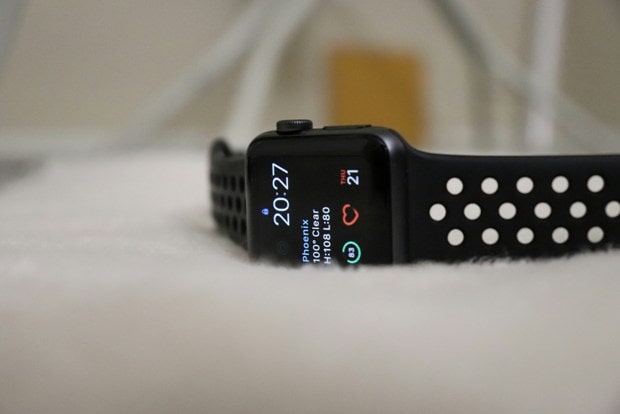The Intersection of Technology and Wellness: Innovations in Health and Fitness Businesses

Introduction
In today’s fast-paced world, the integration of technology into the health and fitness industry has revolutionized the way we approach wellness. From wearable devices tracking our every move to virtual fitness classes accessible from the comfort of our homes, innovations in technology have not only made it easier for individuals to monitor their health but have also transformed the way businesses operate in this sector. The intersection of technology and wellness has ushered in a new era of possibilities, enabling health and fitness businesses to thrive and adapt to the evolving needs of consumers.
Wearable Fitness Trackers: Personalizing Health Monitoring
One of the most significant advancements in recent years is the proliferation of wearable fitness trackers and smartwatches. These devices, equipped with sensors capable of monitoring heart rate, sleep patterns, and activity levels, provide users with valuable insights into their overall health and fitness. Companies like Fitbit, Garmin, and Apple have led the charge in this space, offering a range of products tailored to different needs and preferences. By leveraging data collected from these devices, individuals can set and track their fitness goals more effectively, leading to improved outcomes and a greater sense of accountability.
Virtual Fitness Platforms: Accessible Exercise Anytime, Anywhere
Moreover, the rise of virtual fitness platforms has democratized access to exercise routines and wellness resources. With the advent of streaming services and mobile apps, people can now participate in live or pre-recorded workout sessions led by professional trainers from anywhere in the world. Platforms such as Peloton, Beachbody On Demand, and Daily Burn have gained popularity for their diverse selection of classes spanning various fitness disciplines, including yoga, strength training, and indoor cycling. This accessibility has been particularly beneficial for individuals with busy schedules or limited access to traditional gym facilities, allowing them to prioritize their health without sacrificing convenience.
Data Analytics: Optimizing Business Operations
In addition to enhancing the consumer experience, technology has also enabled health and fitness businesses to optimize their operations and improve efficiency. Data analytics tools, for example, can help gym owners analyze member demographics, attendance patterns, and equipment usage to make informed decisions about facility layout, class scheduling, and marketing strategies. By harnessing the power of data, businesses can tailor their offerings to better meet the needs and preferences of their clientele, ultimately driving customer satisfaction and retention.
Telemedicine and Digital Health Solutions: Transforming Healthcare Delivery
Furthermore, advancements in telemedicine and digital health solutions have transformed the way healthcare providers deliver services and support to patients. Telehealth platforms allow individuals to consult with medical professionals remotely, reducing the need for in-person appointments and minimizing wait times. This convenience has been especially valuable during the COVID-19 pandemic, as it has enabled patients to receive timely care while adhering to social distancing guidelines. Additionally, mobile apps and online platforms focused on mental health and well-being have seen increased adoption, providing users with resources for stress management, mindfulness, and therapy sessions.
Personalized Health Solutions: Tailoring Wellness to Individuals
The integration of technology into health and fitness businesses has also spurred innovation in product development and customization. For instance, 3D body scanning technology can accurately assess body composition and measurements, allowing for the creation of personalized workout plans and nutrition recommendations. Similarly, advancements in genetic testing and DNA analysis have enabled companies to offer personalized fitness and nutrition guidance based on an individual’s unique genetic makeup. By leveraging these insights, consumers can optimize their wellness routines and achieve better results more efficiently.
Immersive Fitness Experiences: Virtual Reality and Augmented Reality
Another area where technology is making waves is in the realm of virtual reality (VR) and augmented reality (AR) fitness experiences. These immersive technologies transport users to virtual environments where they can engage in interactive workouts and simulations, providing a more engaging and entertaining alternative to traditional exercise routines. Companies like Supernatural and Oculus have capitalized on this trend, offering VR fitness games and experiences designed to make workouts feel like a fun and immersive adventure.
Challenges and Considerations: Navigating Privacy and Security
However, as with any technological advancement, there are challenges and considerations that must be addressed. Privacy and data security concerns, for instance, have become increasingly prevalent as more personal health information is collected and stored electronically. It is essential for businesses to implement robust security measures and adhere to regulatory guidelines to protect the confidentiality and integrity of user data. Additionally, there is a need for ongoing education and awareness to ensure that consumers understand how their data is being used and have control over their privacy settings.
Conclusion
In conclusion, the intersection of technology and wellness has opened up a world of possibilities for health and fitness businesses, empowering individuals to take control of their health and well-being in unprecedented ways. By leveraging wearable fitness trackers, virtual fitness platforms, data analytics, telemedicine, personalized health solutions, and immersive fitness experiences, businesses can meet the evolving needs of consumers and drive innovation in the industry. As we continue to embrace these innovations, it is crucial for businesses to prioritize data security, consumer privacy, and ethical practices to build trust and foster long-term relationships with their customers. By harnessing the power of technology responsibly, the future of health and fitness holds endless opportunities for innovation and growth.
